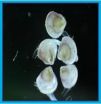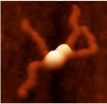(Press-News.org) Clinical trial evaluates ex vivo cultured cord blood
Umbilical cord blood (UCB) is a rich source of hematopoietic stem and progenitor cells (HSPCs) that can be used for bone marrow transplantation; however, UCB transplantation is hampered by low numbers of HSPCs per donation, which delays engraftment and immune reconstitution. In this issue of the Journal of Clinical Investigation, Mitchell Horwitz and colleagues at Duke University Medical Center conducted a phase I clinical trial to test the long term engraftment capability of UCB HSPCs that were expanded ex vivo for 21 days in the presence of nicotinamide and then combined with the non-cultured T cell fraction of the UCB (NiCord). Eleven adults with hematological malignancies received 1 unit of NiCord and a second unit of un-manipulated UCB following myeloablative bone marrow conditioning. Eight patients exhibited complete or partial engraftment of the NiCord unit and achieved earlier hematopoietic recovery compared to historical controls. These results indicate that further clinical study of NiCord is warranted.
TITLE:
Umbilical cord blood expansion with nicotinamide provides long-term multilineage engraftment
AUTHOR CONTACT:
Mitchell Horwitz
Duke University Medical Center, Durham, NC, USA
Phone: 919-668-1045; E-mail: mitchell.horwitz@duke.edu
View this article at: http://www.jci.org/articles/view/74556
Murine model of Ewing's sarcoma reveals tumor origins
Ewing's sarcoma is a rare pediatric bone tumor that results from a genetic translocation that results in an EWS-ETS fusion. The tumor can have both mesodermal and ectodermal features, making it difficult to determine the cellular origin. In this issue of the Journal of Clinical Investigation, Takuro Nakamura and colleagues at the Japanese Foundation for Cancer Research developed a murine model of Ewing's sarcoma by introducing EWS-ETS fusion genes into a late gestational cell fraction enriched for osteochondrogenic progenitors from the embryonic superficial zone (eSZ) of the long bones The model tumors shared a gene expression profile with human Ewing's sarcoma and both murine and human tumors exhibited upregulated of WNT/β-catenin and EGF signaling. Finally, inhibitors of the WNT/β-catenin pathway attenuated murine tumor growth. This model provides a tool to evaluate potential therapies for treatment of this rare disease.
TITLE:
Ewing's sarcoma precursors are highly enriched in embryonic osteochondrogenic progenitors
AUTHOR CONTACT:
Takuro Nakamura
The Cancer Institute, Tokyo, JPN
Phone: 81-3-3570-0462; Fax: 81-3-3570-0463; E-mail: takuro-ind@umin.net
View this article at: http://www.jci.org/articles/view/72399
ALSO IN THIS ISSUE
AGING
TITLE:
Phosphatase WIP1 regulates adult neurogenesis and WNT signaling during aging
AUTHOR CONTACT:
Dmitry Bulavin
Institute Of Molecular And Cellular Biology, Singapore, SGP
Phone: 65-65869589; E-mail: dvbulavin@imcb.a-star.edu.sg
View this article at: http://www.jci.org/articles/view/73015
BONE BIOLOGY
TITLE:
Vitamin B12–dependent taurine synthesis regulates growth and bone mass
AUTHOR CONTACT:
Vijay Yadav
Wellcome Trust Sanger Institute, Cambridge, GBR
Phone: +44-01223-496948; E-mail: vy1@sanger.ac.uk
View this article at: http://www.jci.org/articles/view/72606
GENETICS
TITLE:
Hypomorphic PCNA mutation underlies a human DNA repair disorder
AUTHOR CONTACT:
Andrew Crosby
University of Exeter Medical School, Exeter, GBR
Phone: +44 (0)1392 408302; E-mail: a.h.crosby@exeter.ac.uk
View this article at: http://www.jci.org/articles/view/74593
IMMUNOLOGY
TITLE:
Characterization of pandemic influenza immune memory signature after vaccination or infection
AUTHOR CONTACT:
Behazine Combadiere
INSERM UMR 1135, Paris, , FRA
Phone: +33140779888; Fax: +33140779734; E-mail: behazine.combadiere@upmc.fr
View this article at: http://www.jci.org/articles/view/74565
TITLE:
Immune activation alters cellular and humoral responses to yellow fever 17D vaccine
AUTHOR CONTACT:
Lydie Trautmann
Vaccine and Gene Therapy Institute-Florida, Port Saint Lucie, FL, USA
Phone: 772-345-5671; Fax: 772-345-0625; E-mail: ltrautmann@vgtifl.org
View this article at: http://www.jci.org/articles/view/75429?key=57f03b2ed420ac53701b
NEUROSCIENCE
TITLE:
Missense dopamine transporter mutations associate with adult parkinsonism and ADHD
AUTHOR CONTACT:
Ulrik Gether
University of Copenhagen, DK-2200 Copenhagen N, Denmark
Phone: 45.2384.0089; Fax: 45.3532.7610; E-mail: gether@sund.ku.dk.
View this article at: http://www.jci.org/articles/view/73778
ONCOLOGY
TITLE:
CRIPTO1 expression in EGFR-mutant NSCLC elicits intrinsic EGFR-inhibitor resistance
AUTHOR CONTACT:
Giuseppe Giaccone
Georgetown University, Washington, DC, USA
Phone: 202.687.7072; Fax: 202.687.0313; E-mail:gg496@georgetown.edu
Or
Yisong Wang
Georgetown University, Washington, DC, USA
Phone: 202.687.4738; Fax: 202.687.0313; E-mail:yw350@georgetown.edu
View this article at: http://www.jci.org/articles/view/73048
TITLE:
MicroRNA-205 signaling regulates mammary stem cell fate and tumorigenesis
AUTHOR CONTACT:
Chun-Ju (Alice) Chang
Purdue University, West Lafayette, USA
Phone: 7654942648; E-mail: chunjuchang@purdue.edu
View this article at: http://www.jci.org/articles/view/73351
INFORMATION:
JCI online ahead of print contents for June 9, 2014
2014-06-09
ELSE PRESS RELEASES FROM THIS DATE:
Newly identified B-cell selection process adds to understanding of antibody diversity
2014-06-09
BOSTON – As elite soldiers of the body's immune response, B cells serve as a vast standing army ready to recognize and destroy invading antigens, including infections and cancer cells. To do so, each new B cell comes equipped with its own highly specialized weapon, a unique antibody protein that selectively binds to specific parts of the antigen. The key to this specialization is the antigen-binding region that tailors each B cell to a particular antigen, determining whether B cells survive boot camp and are selected for maturation and survival, or wash out and die.
Now, ...
Faster, higher, stronger: A protein that enables powerful initial immune response
2014-06-09
Your first response to an infectious agent or antigen ordinarily takes about a week, and is relatively weak. However, if your immune system encounters that antigen a second time, the so-called memory response is rapid, powerful, and very effective.
Now, a team of researchers at The Wistar Institute offers evidence that a protein, called Foxp1, is a key component of these antibody responses. Manipulating this protein's activity, they say, could provide a useful pathway to boosting antibody responses to treat infectious diseases, for example, or suppressing them to treat ...
The Academy of Radiology Research featured in Nature Biotechnology journal
2014-06-09
The Academy of Radiology Research reported in the current issue of Nature Biotechnology (Volume 32, Issue 6) that patent output from the National Institutes of Health (NIH) is vital to understanding which various areas of science are contributing most to America's innovation economy. The report, "Patents as Proxies: NIH Hubs of Innovation," confirms an increased economic value of NIH patents as compared to private sector patents, as well as meaningful differences in the rate and quality of invention across different research and development (R&D) investments.
"The Academy ...
NOAA scientists find mosquito control pesticide low risk to juvenile oysters, hard clams
2014-06-09
Four of the most common mosquito pesticides used along the east and Gulf coasts show little risk to juvenile hard clams and oysters, according to a NOAA study.
However, the study, published in the on-line journal Archives of Environmental Contamination and Toxicology, also determined that lower oxygen levels in the water, known as hypoxia, and increased acidification actually increased how toxic some of the pesticides were. Such climate variables should be considered when using these pesticides in the coastal zone, the study concluded.
"What we found is that larval oysters ...
Antiviral therapy may prevent liver cancer in hepatitis B patients
2014-06-09
DETROIT – Researchers have found that antiviral therapy may be successful in preventing hepatitis B virus from developing into the most common form of liver cancer, hepatocellular carcinoma (HCC).
That was the finding of a study published in the May issue of Clinical Gastroenterology and Hepatology. Investigators from Henry Ford Health System in Detroit, Geisinger Health System in Danville, Pa., and Kaiser Permanente in Honolulu, Hawaii and Portland, Ore. participated in the study, along with investigators from the Centers for Disease Control and Prevention in Atlanta. ...
How much fertilizer is too much for the climate?
2014-06-09
EAST LANSING, Mich. — Helping farmers around the globe apply more-precise amounts of nitrogen-based fertilizer can help combat climate change.
In a new study published in this week's Proceedings of the National Academy of Sciences, Michigan State University researchers provide an improved prediction of nitrogen fertilizer's contribution to greenhouse gas emissions from agricultural fields.
The study uses data from around the world to show that emissions of nitrous oxide, a greenhouse gas produced in the soil following nitrogen addition, rise faster than previously expected ...
Coral, human cells linked in death
2014-06-09
SAN DIEGO (June 6, 2014) — Humans and corals are about as different from one another as living creatures get, but a new finding reveals that in one important way, they are more similar than anyone ever realized.
A biologist at San Diego State University has discovered they share the same biomechanical pathway responsible for triggering cellular self-destruction. That might sound scary, but killing off defective cells is essential to keeping an organism healthy.
The finding will help biologists advance their understanding of the early evolution of multicellular life, ...
Researchers recast addiction as a manageable disease
2014-06-09
Neuroscientists agree that abuse of drugs hijacks circuits in the brain that are crucial for decision-making, but society as a whole tends to stigmatize addicted people for lacking self-control. Slowly but steadily, scientists say, they are making important progress in changing the perception of addiction as they identify new therapeutic interventions that could render addiction into the equivalent of a manageable disease like diabetes.
A group of addiction researchers, for one, recently recommended to the Commission on Narcotic Drugs, part of the United Nations Office ...
Protein could put antibiotic-resistant bugs in handcuffs
2014-06-09
DURHAM, N.C. -- Staph infections that become resistant to multiple antibiotics don't happen because the bacteria themselves adapt to the drugs, but because of a kind of genetic parasite they carry called a plasmid that helps its host survive the antibiotics.
Plasmids are rings of bare DNA containing a handful of genes that are essentially freeloaders, borrowing most of what they need to live from their bacterial host. The plasmids copy themselves and go along for the ride when the bacteria divide to copy themselves.
A team from Duke and the University of Sydney in ...
Parent and child must get enough sleep to protect against child obesity
2014-06-09
URBANA, Ill. – Is sleep one of your most important family values? A new University of Illinois study suggests that it should be, reporting that more parental sleep is related to more child sleep, which is related to decreased child obesity.
"Parents should make being well rested a family value and a priority. Sleep routines in a family affect all the members of the household, not just children; we know that parents won't get a good night's sleep unless and until their preschool children are sleeping," said Barbara H. Fiese, director of the U of I's Family Resiliency Center ...



